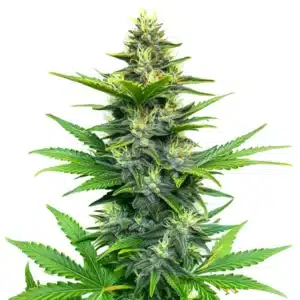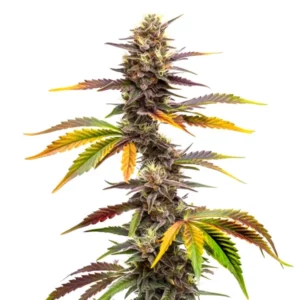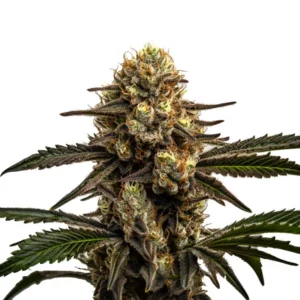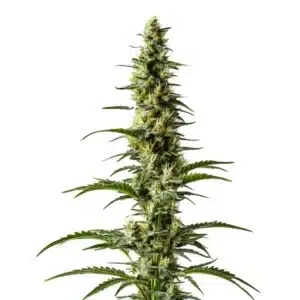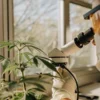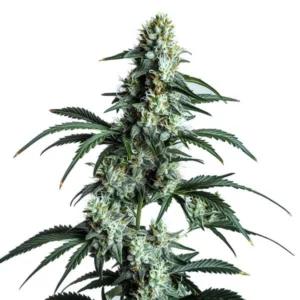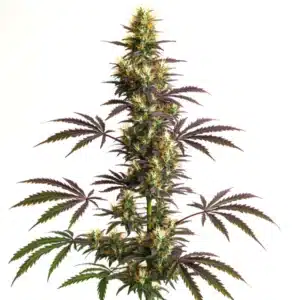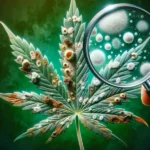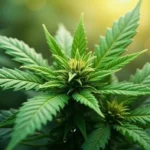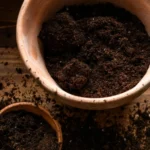
How to Speak Fluent Cannabis: A Guide to Plant Stress
Your cannabis plant is talking to you every single day. You just have to learn its language. And the most important thing it can tell you is when it’s stressed.
So, how do you know? Forget complex charts for a moment and just look at your plant’s posture. Are its leaves praying up towards the light, looking strong and vibrant? Or are they droopy and flaccid, looking sad and tired, even if the soil is moist? That droop is the universal sign of stress. It’s your plant’s way of saying, “Hey, something is wrong down here!”
Recommended Strains
Blue Dream
|
|
THC | 17% - 24% (Medium) |
|
|
Type | Feminized |
|
|
Yield | High |
|
|
Phenotype | 50% Indica / 50% Sativa |
Alien GG Regular
|
|
THC | 22% - 24% (Medium) |
|
|
Type | Regular |
|
|
Yield | High |
|
|
Phenotype | 70% Indica / 30% Sativa |
Once you see the droop, it’s time to become a detective. Let’s run through the usual suspects.
Suspect #1: Nutrient Stress (The Most Common Culprit)
You see yellowing on the leaves and you immediately think you need to feed it more. Slow down. 9 times out of 10, the problem isn’t a lack of food in the soil; it’s that your plant can’t eat it.
Here’s the clue: Are the bottom leaves turning yellow first? That’s a classic sign of nitrogen deficiency. Why? Because nitrogen is a mobile nutrient. The plant is smart; when it’s starving, it will steal the nitrogen from its old, unimportant lower leaves and move it up to the new, vital growth at the top.
And the cause of this starvation? Almost always, it’s a bad pH. If your water and soil pH are not in the right zone, the plant’s roots are chemically “locked out” from absorbing the food that’s right in front of them. For soil, you must keep your watering pH stable at 6.0. A pH drifting up to 7 will lock out iron; below 5, it can’t get nitrogen. Master your pH, and you’ll solve most nutrient problems before they start.
Promos & Deals
Suspect #2: Water & Light Stress (The Environmental Crimes)
Water: Both too much and too little water will cause the classic droop. An easy way to prevent the drama of this cycle? Use a layer of mulch on your soil. It insulates the roots and helps maintain a consistent moisture level, making your plant much more resilient to your watering habits.
Light: Light stress comes in two forms. Too little light will cause your plant to “stretch” (etiolation), getting tall and skinny with weak stems as it desperately reaches for a light source. Too much light is just like a sunburn; it will cause the top leaves to look bleached, yellow, or burnt.
Suspect #3: Temperature Shock
It’s not just about how hot your grow room gets. Big, abrupt temperature drops between day (lights on) and night (lights off) can severely shock a plant. A difference of more than 10°C (18°F) is a major stressor, especially late in the flowering stage, and can hamper bud development.
The Recovery Plan: Helping Your Plant Heal
Okay, so you’ve played detective, found the culprit, and fixed the problem. How do you help your plant bounce back?
This is where you can give it a therapeutic boost. Look for supplements containing natural plant growth hormones like auxins, gibberellins, and cytokinins. These are often found in kelp or seaweed extracts. Think of it as a powerful multivitamin smoothie for your recovering plant. It helps it overcome the stress and get back to healthy, vigorous growth.
When you learn to read the signs, you can Nurture any plant, but resilient strains like Blue Dream, Sour Diesel, or OG Kush are great teachers because they are tough and tend to show stress signs clearly. Learning their language is the key to truly Cultivate your Homegrown garden.
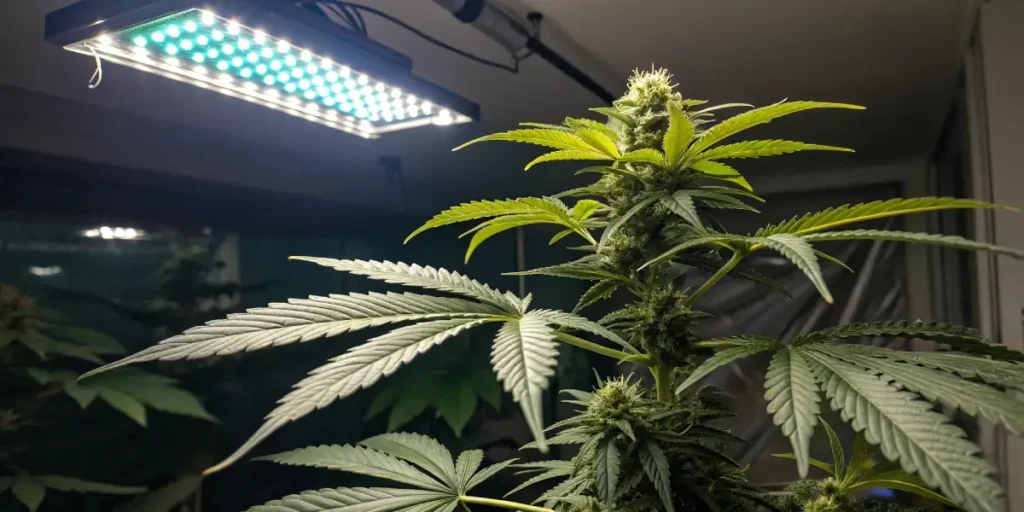
Frequently Asked Questions
What is the first and most common sign of stress in a cannabis plant?
The posture of the leaves. Healthy, happy leaves will be angled slightly upwards towards the light, looking perky and strong. The first universal sign of stress, whether from water, nutrient, or root issues, is that the leaves will become flaccid and droop downwards.
Why do the bottom leaves of my plant turn yellow first?
This is a classic sign of nitrogen deficiency. Nitrogen is a “mobile nutrient,” which means the plant can move it around. When the plant is starving for nitrogen, it will pull it from the old, lower leaves and send it to the new growth at the top. This is why the bottom leaves sacrifice themselves first.
What is the main cause of most nutrient problems?
An incorrect pH level in the water and soil. 90% of the time, the nutrients are present in the soil, but the plant’s roots are “locked out” and can’t absorb them because the pH is too high or too low. Maintaining a stable watering pH of 6.0 for soil is the single most important factor for proper nutrition.
How can I help my plant recover after it has been stressed?
After you’ve fixed the underlying problem (e.g., corrected the pH, adjusted watering), you can help the plant bounce back by giving it a feed with a supplement containing natural plant hormones. Products made from kelp or seaweed are excellent as they are rich in auxins, gibberellins, and cytokinins, which help regulate growth and recovery.



